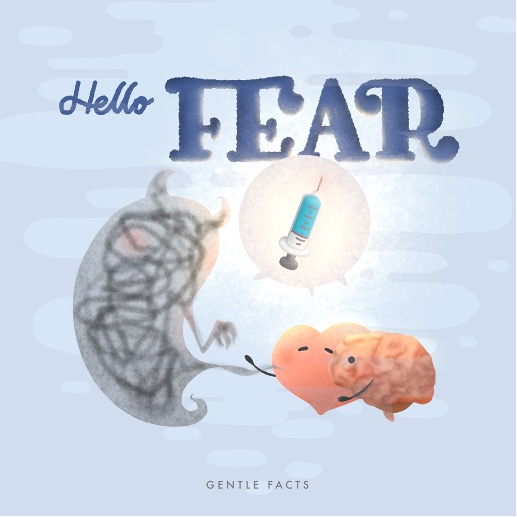Jennifer Ma is a scientist-turned-artist and science communicator with a PhD in stem cell bioengineering. Her latest project, Gentle Facts, strives to create social change through Compassionate Science Communication. Drawing from evidence-based best practices in science and interpersonal communication, she teaches the public how to effectively advocate for informed decisions and actions. Follow Jen on Twitter @jnslma.
Years ago at a stem cell conference, I watched a documentary about stem cell tourism, in which patients who had traveled to clinics all over the world for unproven stem cell-based treatments were interviewed. It was heartbreaking to hear stories of desperate patients being duped into spending thousands of dollars, only to have their hopes crushed and sometimes their health further compromised. But none of that was as shocking as when one of the patients, who was suffering both physically and financially from the illegitimate therapy he received, said that he would do it again—because that’s how desperate he was.
I would have thought that getting “burned” would steer someone clear of their misinformed belief once and for all. Here was a case where a person received correction in the form of information and also firsthand experience. Clearly something even more powerful than reality was at play here.
Emotions give misinformation power
As scientists trained to operate on evidence, it is easy for us to forget that decision making and belief forming are often heavily shaped by other factors, including our emotions and values. The truth is, once I put myself in the patient’s shoes in the story above—imagine the despair and yearning for a life where one could feel capable, independent, or simply at peace in their own body—it is not so shocking anymore to think that he would accept any risk to get rid of the excruciating physical and mental pain he experienced day after day.
Emotions and values are fundamental drivers in forming our beliefs, whether they are based on facts or not. We are motivated by emotions; for example, fear can effectively alter attitudes, intentions and behaviours in an attempt to avoid harm. We use feelings as cognitive shortcuts to help us make quick decisions, leaving us susceptible to deception. When we are told that we are wrong, the psychological discomfort can also motivate us to disregard the correction to reduce that unpleasant feeling.
These emotions are often tied to our values, which are themselves tied to our personal and sociocultural identity. Receiving corrections that are inconsistent with our worldview can therefore be perceived as attacking one’s identity, thereby triggering intense negative emotions and a defensive response that results in discrediting or ignoring the evidence presented.
Turn the tide with empathy
Our ability to properly identify and acknowledge the emotions and values of our audience can therefore go a long way when trying to address misinformed beliefs, as follows:
- It points us to the drivers behind their false beliefs so that we can properly address them;
- It helps build a trusting relationship and opens up a communication channel that our audience would actually be receptive to; and,
- The compassion and respect we convey will ideally leave the listener with positive emotions that will motivate further communication, actions, or exploration of the topic.
Essentially, instead of working against our audience’s emotions, empathy turns the tables and makes emotions work in our favour.
Leaning into your audience’s emotions and showing compassion can open up a communication channel that they will be receptive to. For example, vaccine hesitation is often driven by fear of harm. Understanding and acknowledging that fear helps build trust and allows us to address it directly using our scientific knowledge.
Empathizing is a two-step process that happens through listening and reflecting. Listening is about recognizing that our audience is the expert of their life, their experiences, and their circumstances. We invite them to share their reality with us and receive without judgment. This allows us to understand and put ourselves in the audience’s situation. Reflecting conveys our understanding, encourages them to share more openly, establishes a connection, and helps them organize their thoughts.
Here are a few tips on how to listen and reflect:
| Do | Don’t | |
| Listen |
|
|
| Reflect |
|
|
At first, it may seem like showing compassion does not really get you anywhere—you are not pointing out their mistakes or leading them towards the truth…yet. But remember, empathy is just the first step, albeit a crucial one. It builds the bridge that allows messages to get across and it is an investment that will save you time, effort, and headaches down the road. It also gets easier with practice. Next time when you see someone sharing misinformation, perhaps in a comment online, imagine what emotions and values may be behind it. The more you do this, the more natural it will feel when you engage in an actual conversation or when you research your audience.
Want more tips on how to engage your audience effectively using compassion? Follow me on Instagram and let us know in the comments what challenges you’d like to tackle!
Guest
Latest posts by Guest (see all)
- Regenerative immunotherapy: Hope for chronic autoimmune diseases - September 16, 2025
- Canada’s regenerative revolution: Why AI is the catalyst - September 4, 2025
- Summer by Design: A launchpad for future entrepreneurs and industry scientists - August 14, 2025







Comments